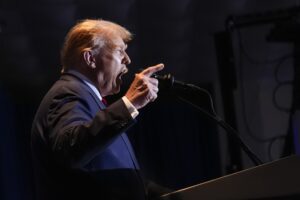On Monday, President Donald Trump slapped a 30 percent tariff on imported solar cells and panels.
But while the White House said the goal was to punish China for an industrial policy aimed at taking over the global solar market, the harsh reality is that the president is going to end up punishing the states that voted for him the most.
On top of that, U.S. taxpayers are actually going to end up paying for half of any tariff.
Analysis provided to ThinkProgress by GTM Research concludes, “new and emerging state markets are disproportionately affected [by the new tariff], with southern states like Texas, Florida, Georgia, and South Carolina amongst the most impacted by the tariffs.”
All of those states voted for Trump in the 2016 election.
MJ Shiao, GTM’s head of Americas Research, explained in an interview that the states hurt the most by the new tariff are the “hot markets that are on the cusp of becoming economic for solar,” or that just became economic thanks to the steady and rapid price drops for solar cells and panels. Those states are disproportionately found in the South and Southeast.
In addition to punishing emerging markets in several red states, experts say the new tariff will also backfire for all U.S. taxpayers.
“The U.S. federal government will end up footing some of the bill for Trump’s decision,” Hugh Bromley, a Bloomberg New Energy Finance (BNEF) solar analyst, said in an email.
“Half of any increase in system costs will be offset through the tax code via the Investment Tax Credit and depreciation.”
In short, U.S. taxpayers will end up footing half the bill.
“The investment tax credit for solar is 30 percent of capex [capital expenditure],” Amy Grace, head of North American research for BNEF, explained — so 30 percent of any tariff-driven price increase gets paid back through the tax code.
And the tax code’s accelerated depreciation for new equipment means yet another portion of any tariff-driven price increase will, again, ultimately be paid back by U.S. taxpayers.
Will the tariff provide much benefit for U.S. solar manufacturers, which is the key rationale for imposing them in the first place?
BNEF’s Bromley says it won’t.
“Anyone expecting a U.S. manufacturing renaissance as a result of these tariffs is set to be disappointed,” he said.
“A tariff lasting only four years and ratcheting down quickly is unlikely to attract any manufacturing investment that was not going to occur anyways.”
Finally, can red state voters and U.S. taxpayers at least take some comfort knowing that China is going to suffer from all this? The answer to that is also no.
“Chinese manufacturers have aggressive cost reduction plans in place already,” Shiao said, and the U.S. is only 10 percent of the global market.
But GTM’s research finds that the tariffs will reduce U.S. installations about 10 percent over the next five years. So any overall impact on Chinese solar manufacturing and sales will be quite modest indeed.

The bottom line is that Trump’s new tariff on solar imports will have a very limited impact on China or domestic solar manufacturers, but red states will take a disproportionate share of the lost revenues and lost jobs from the reduction in U.S. solar installations — and taxpayers will end up footing much of the bill.
This, sadly, is the kind of counterproductive impact we have come to expect from Trump’s energy policies.
Source: Think Progress. Reproduced with permission.










